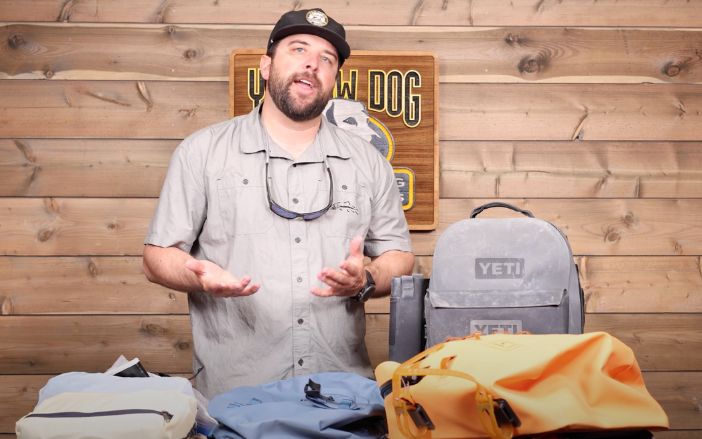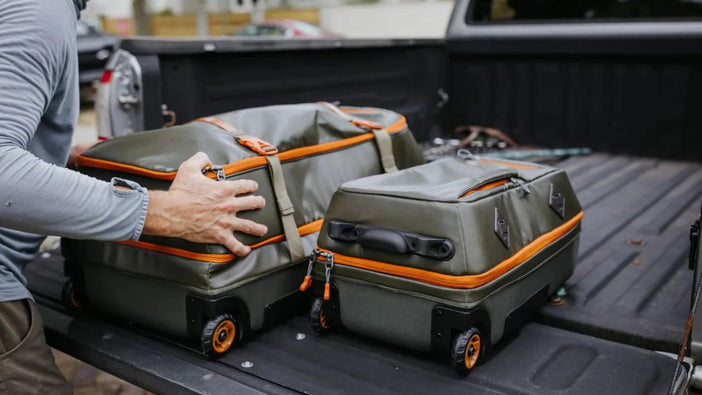It was as if we were loading drift boats for an eight-day excursion down the Jefferson River near Twin Bridges, Montana. The Mongolian landscape mirrors Montana, except for the fact that there are no signs of humanity while floating. The main difference was that instead of football browns on hoppers and streamers, we were pursuing Taimen trout on large topwater rodent and baitfish flies. Taimen and browns think alike, but a Taimen would devour an 18” brown like Homer Simpson eats a donut.
Traveling to Mongolia involves more time flying than your typical freshwater trip from the USA, but there is true value in that time in the air. After a transfer in Seoul, our group met at the Genghis Khan International Airport in Ulaanbaatar (UB) Mongolia. Mongolia River Outfitters had boots on the ground and were waiting for us as we exited customs, which was a super easy process. We definitely felt welcome after a long COVID-induced lack of tourism.
The transfer agent in UB spoke English and handled everything for us from checking into the hotel, to providing a quick tour of the city and making a dinner reservation in a private room where we were well taken care of by the owner of the establishment. Fresh Mongolian meats and cold beverages were consumed in copious amounts.
The following morning we were escorted to a private runway strip and charter flight into the unknown. Once leaving UB, there was nothing to see from the plane as far as humanity goes. Genghis was a believer in being nomads and creating nothing permanent besides bridges, so they could move masses of people quickly for a variety of reasons (read this book – Genghis Kahn and the Making of the Modern World). Again, it seemed like we were flying from Billings to the upper Madison or Jefferson in Montana. Besides the faint two-track “roads” and a small grouping of gers (otherwise known as a yurt or a circular tent) there was nothing but a naked landscape.

After a smooth landing at the “airstrip” that consisted of a field and or angle cones and a wind sock, we loaded up our gear and team into three vintage Russian off-road minivans. Much like the runway we had just touched down on, we just drove over the land in the most direct route. Yeah, there were some common routes when we crossed a creek but no actually defined roads. The drivers wasted no time and were confident in the vehicle’s ability.
We reached the boat launch and outfitter in about an hour of off-road transfer time. The guides and support staff were awaiting our arrival and served us lunch in a ger while they assisted us in rigging our tackle. The giddy anglers were pumped after two and a half days of traveling and just about halfway around the world. We would float approximately 130 kilometers of the Onon River The upper river was small water compared to the lower river where we would end our excursion, which would resemble the Yellowstone River around Billings, due to the numerous tributaries that would add more than ten times the amount of river flow.
One beneficial aspect of this specific beat of the river is that we were fishing out of US-West-style drift boats, which is a total luxury in this type of backcountry setting. How they got these Idaho-made boats to Mongolia escaped the anglers. The go-to fly gear was a single-handed nine-weight rod with cold weather, weight-forward floating line. The stout 30 lbs leaders needed to roll over the bulbous, wind-resistant flies in the wind. Since Taimen are not leader or for that matter boat shy, one could fish any pretty much any diameter of leader. The section of river we were floating had not been graced by humans in over two weeks. Im not sure I can say I have ever fished a river that only feels around 32 anglers a year, and that is spaced out in two to three-week increments.

It is paramount to set the hook with a tarpon-like strip set and give them the wood, hence the strong leader material. In fact, repeated sets or strikes are vital to drive the hook home since a Taimen’s mouth is hard like a tarpon. A death grip type clamping down in the line was advised. If the anglers gave too much line to the fish, they would head directly into the massive log jams that periodically stacked up along the bank and islands.
It was literally a tug-of-war battle. Often the fish would clamp down on the tippet just about the fly and pull hard, the angler thought they set the hook, but the fly was actually loosely toggling in its mouth, so when the fish opened its jaw, the fly was free and the angler would fall backward. It was difficult to set so hard while maintaining a tight line, as the drift boat was moving downstream towards the fish. This constantly created slack between the fish and the angler. A few of the anglers started using the two-handed strip like many anglers incorporate in pike or tarpon fishing. This enables anglers to quickly retrieve the fly but also set hard and often while maintaining a very tight line. The percentage hooking and landing of taimen jumped immediately.
Most anglers fished subsurface streamers that imitate the four to six-inch baitfish that cling to the shoreline’s mossy and rocky banks. The nervous baitfish hung by the inlets and outlets of the tributaries and side channels. The guides held the drift boats in these prime areas for repetitive presentations. When taimen was located, the guides knew there would be multiple fish in that zone.
The river levels were just low enough that the fish could not hide in the super-deep channels or backwaters. Ice was forming in the slack water which also pushed fish into the main channel, thus making them much more catchable. The low temps definitely chilled the anglers to the bone, especially since most were from SC, TX, and LA. The chilly mornings were a solid trade-off to have consistent action for taimen. The guides built fires at lunch and poured hot water from a thermos into our wading boots each morning and throughout the day.

Each afternoon the crew set up riverfront teepee-style tents with two cots, rugs, and wool blankets for every two guests in a new camp as we floated downstream. A main dining outfitters style tent was erected with a full bar, appetizers, and dinner and breakfast tables. A wood stove warmed the tent and dried our gear each morning and evening. The food was hearty and delicious. A range of meats, pasta, pastries, rice, and veggies kept the anglers fueled up. Breakfast consisted of eggs, meats, freshly baked bread, and plenty of fresh coffee and tea.
Mongolian Genghis Khan vodka, wine, and beers flowed during lunch and dinner. The rutting and bugling Elk in the evenings serenaded us as we built campfires and enjoyed cigars. After our week of floating, we came to the last camp on the Russian border. The last night was spent in traditional Mongolian Gers with stoves and colorful decorations. As our charter flight lifted from the Mongolian tundra thoughts of Genghis Khan and his armies crossing the plains and mountains seemed more familiar after our excursion. The fall foliage had faded like our anticipation for this adventure. We had caught more taimen than expected, so expectations were met, and we were all satisfied anglers. Talks of a return trip emerged immediately.





























